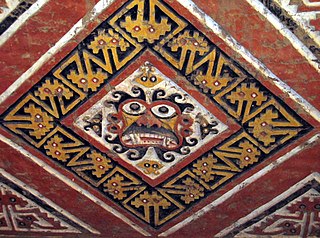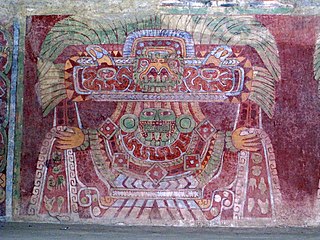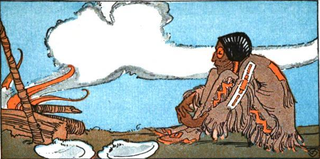 W
WThroughout history, spiders have been depicted in popular culture, mythology and in symbolism. From Greek mythology to African folklore, the spider has been used to represent a variety of things, and endures into the present day with characters such as Shelob from The Lord of the Rings and Spider-Man from the eponymous comic series. It is also a symbol of mischief and malice for its toxic venom and the slow death it causes, which is often seen as a curse. In addition, the spider has inspired creations from an ancient geoglyph to a modern steampunk spectacle. Spiders have been the focus of fears, stories and mythologies of various cultures for centuries.
 W
WAi apaec, was the chief deity of the Mochica culture. The most feared and adored of all punitive gods, it was also referred to as the “headsman”. Ai Apaec was worshipped as the creator god, protector of the Moche, a provider of water, food and military triumphs. Aiapaec means 'maker' in the Mochica language.
 W
WAnansi is an Akan folktale character. He often takes the shape of a spider and is sometimes considered to be a god of all knowledge of stories. Taking the role of trickster, he is also one of the most important characters of West African, African American and Caribbean folklore. Originating in West Africa, these spider tales were transmitted to the Caribbean by way of the transatlantic slave trade. Anansi is most well known for his ability to outsmart and triumph over more powerful opponents through his use of cunning, creativity and wit. Despite taking on the role of the trickster, Anansi's actions and parables often carry him as protagonist due to his ability to transform his apparent weaknesses into virtues. He is among several West African tricksters including Br'er Rabbit and Leuk Rabbit.
 W
WArachne is the protagonist of a tale in Roman mythology known primarily from the version told by the Roman poet Ovid (43 BCE–17 CE), which is the earliest extant source for the story. In Book Six of his epic poem Metamorphoses, Ovid recounts how the talented mortal Arachne, daughter of Idmon, challenged Athena, goddess of wisdom and crafts, to a weaving contest. When Athena could find no flaws in the tapestry Arachne had woven for the contest, the goddess became enraged and beat the girl with her shuttle. After Arachne hanged herself out of shame, she was transformed into a spider. The myth both provides an aetiology of spiders' web-spinning abilities and is a cautionary tale warning mortals not to place themselves on an equal level with the gods.
 W
WThe Great Goddess of Teotihuacan is a proposed goddess of the pre-Columbian Teotihuacan civilization, in what is now Mexico.
 W
WIn Lakota mythology, Iktomi is a spider-trickster spirit, and a culture hero for the Lakota people. Alternate names for Iktomi include Ikto, Ictinike, Inktomi, Unktome, and Unktomi. These names are due to the differences in tribal languages, as this spider deity was known throughout many of North America's tribes.
 W
WJorōgumo is a type of Yōkai, a creature, ghost or goblin of Japanese folklore. It can shapeshift into a beautiful woman, so the kanji for its actual meaning is 女郎蜘蛛 or "woman-spider", and to write it instead as 絡新婦 is a jukujikun pronunciation of the kanji. In Toriyama Sekien's Gazu Hyakki Yagyō, it is depicted as a spider woman manipulating small fire-breathing spiders.
 W
WTsuchigumo is a historical Japanese derogatory term for renegade local clans, and also the name for a race of spider-like yōkai in Japanese folklore. Alternate names for the mythological Tsuchigumo include yatsukahagi (八握脛) and ōgumo . In the Kojiki and in Nihon Shoki, the name was phonetically spelled with the four kanji 都知久母, and these words were frequently used in the fudoki of Mutsu, Echigo, Hitachi, Settsu, Bungo and Hizen as well as others.
 W
WUttu is an ancient Sumerian goddess associated with weaving. The same cuneiform symbol used to write her name was also used to write the Sumerian word for "spider", indicating that Uttu was probably envisioned as a spider spinning a web. She appears primarily in the myth of Enki and Ninsikila, in which she resists the sexual advances of her father Enki by ensconcing herself inside her web, but he convinces her to let him in using a gift of fresh produce and the promise that he will marry her. Enki then intoxicates her with beer and rapes her. She is rescued by Enki's wife Ninhursag, who removes Enki's semen from her vagina and plants it in the ground, resulting in the growth of eight new plants, which Enki later eats.